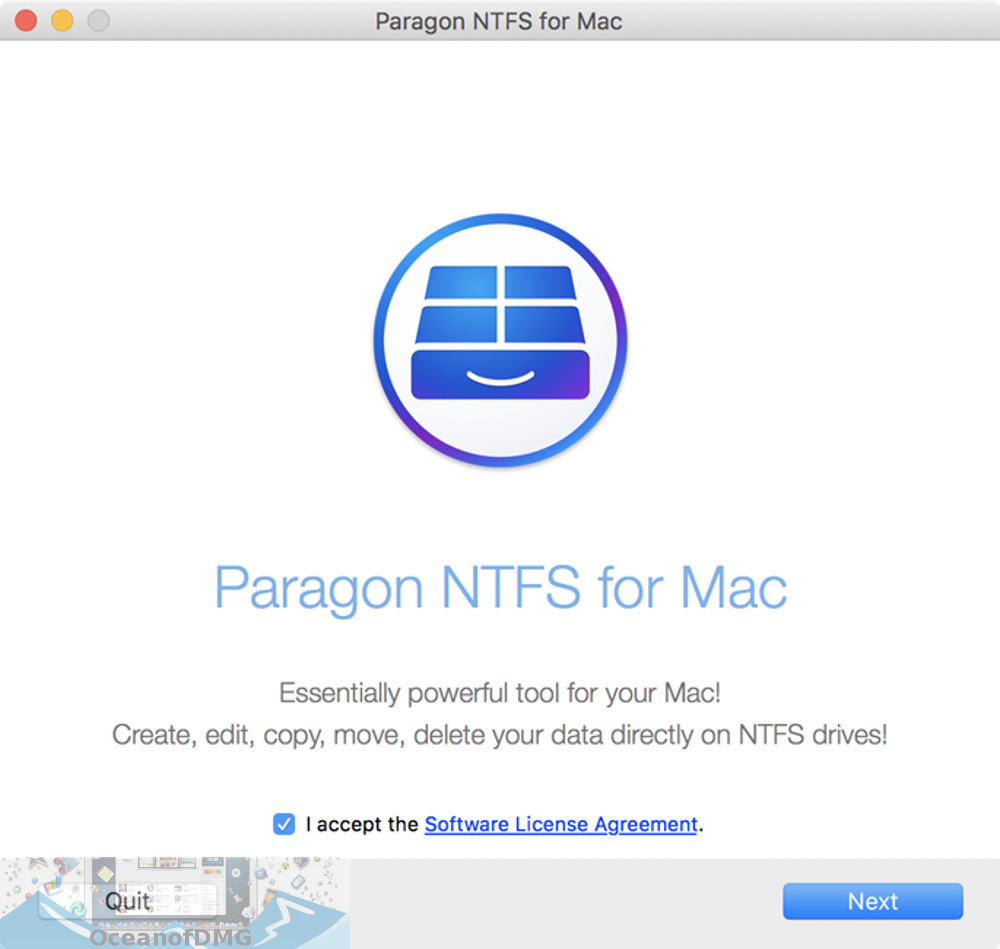
- Ntfs readers for mac for mac#
- Ntfs readers for mac mac os x#
- Ntfs readers for mac manual#
- Ntfs readers for mac mac#
Obviously, this problem was related to file names with 'special' chracters such as German Umlaute.

Their names were all crippled, with the last character showing as "?," I think. Indeed, it seemed that many files with duplicate names existed in various directories. The transfer would always choke somewhere in between by saying such useful things as 'An item with the name "" already exists in this location' or similar. It was impossible, however, to just transfer the whole folder to any location on my Mac. While I could read all the important files using 10.3.8 without problem (I took the hard disk out of the laptop computer and put it in an external USB hard disk enclosure, so I could easily plug it in, browse through the directory cotents and sort out what seemed to be valuable data), I decided it would make me feel more comforable to burn a backup of the whole "Documents and Settings" folder to DVD for archival, in case I forgot to tranfer something.
Ntfs readers for mac mac#
In my case, a family member's Windows laptop broke and I convinced her to get a Mac instead, so I needed to get some old data off the laptop's hard disk. If you are interested in knowing about which problems I had with reading NTFS on 10.3.8 and more background, read on, else you can stop here. These problems include losing resource forks and problems with file names and paths (different systems allow different characters, so a name perfectly usable on one system may not be usable on another). Generally, keep in mind that using a file system other than the 'native' one (HFS+ for a Mac) on any operating system can cause some problems which may come into play at unexpected moments. Make sure you read the most recent comments, though, as all this is a bit experimental and definitely for the advaced users who have experience using the command line. More than a year later, on Apr 15, 2005, silentaccord (using ideas from simoncha) posted a solution which allowed the HFS+ partition to be bootable as well. However, this had the drawback that it was not possible to boot the Mac from the HFS+ partition.

if you don't want to read them all, I posted a longer comment about an improved version on allowing an MS-DOS partitition to be used by Windows and Mac computers and an HFS+ partition to be used by a Mac computer.
Ntfs readers for mac mac os x#
Ntfs readers for mac for mac#
For Mac use, FAT32 is really rather limited and I recommend using it only on an external hard drive, which would then allow easy exchange of files between the platforms. FAT32, however, is not suitable as a format for the boot volume of your Mac computer. If you want a disk format that can be read both by a Macintosh and a Windows PC, basically the only option is formatting the drive in FAT32 (sometimes also referred to as "MS-DOS" format).I didn't look for it, but I very much doubt it and would strongly discourage you from trying it if you are somewhat interested in your files' integrity. At least, it's not possible using the GUI maybe it can be done using diskutil in the Terminal. If you want an NTFS disk, you have to do the formatting on a Windows machine. It is not possible, not even in 10.4.1, to create an NTFS partition or disk.So the user experience is now like with formatting in any other format.
Ntfs readers for mac manual#
I can't remember for sure (although I did it just a few minutes ago), but I think you don't need to do manual unmounting in 10.4.1 any more Disk Utility will do it for you. This hint mentions it is possible with Disk Utiliy, but only after initial unmounting. It is possible to transform a disk with NTFS into a Mac disk with HFS+ format.



 0 kommentar(er)
0 kommentar(er)
